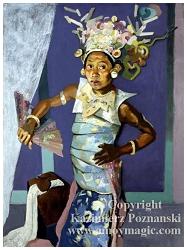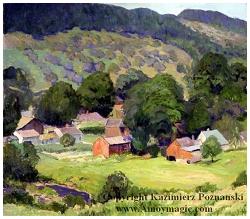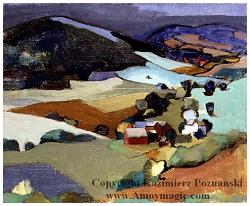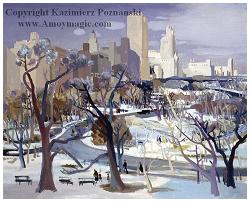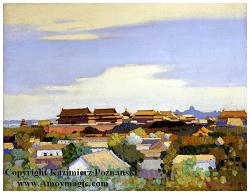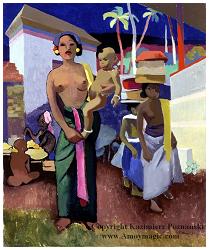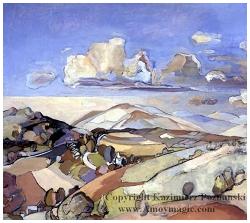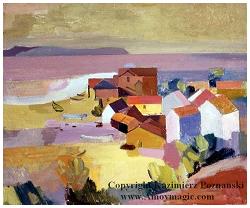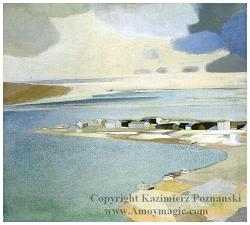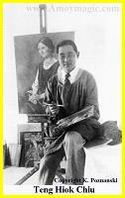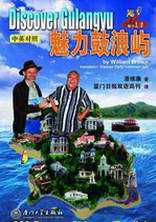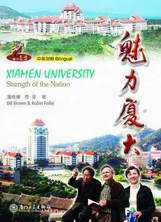![]() Click
to
Access
Click
to
Access
OUTSIDE China
![]() Click
to Access
Click
to Access
INSIDE
China ![]()
TRAVEL LINKS
![]() Xiamen
Xiamen
![]() Gulangyu
Gulangyu
![]() Jimei
Jimei
![]() Tong'an
Tong'an
![]() Jinmen
Jinmen
![]() Zhangzhou
Zhangzhou
![]() Quanzhou
Quanzhou
![]() Wuyi
Wuyi
![]() #1Fujian
Sites!
#1Fujian
Sites!
![]() Fujian
Foto Album
Fujian
Foto Album
![]() Books
on Fujian
Books
on Fujian
![]() Readers'Letters
Readers'Letters
![]() Ningde
Ningde
![]() Zhouning
Zhouning
![]() Longyan
Longyan
![]() Sanming
Sanming
![]() Putian
Putian
![]() Bridges
Bridges
![]() Travel
Info,
Travel
Info,
![]() Hakka
Roundhouses
Hakka
Roundhouses
![]() Travel
Agents
Travel
Agents
MISC. LINKS
![]() Amoy
People!
Amoy
People! ![]()
![]() Darwin
Driving
Darwin
Driving ![]()
![]() Amoy
Tigers
Amoy
Tigers
![]() Chinese
Inventions
Chinese
Inventions
![]() Tibet
in 80 Days!
Tibet
in 80 Days!![]()
![]() Dethroned!
Dethroned!
![]()
![]() Misc.Writings
Misc.Writings
![]() Latest
News
Latest
News
![]() Lord
of Opium
Lord
of Opium
![]() Back
to Main Page
Back
to Main Page
(Contact Dr. Kaz for more info)
![]() Order
Books
Order
Books![]() Xiamenguide
Forum
Xiamenguide
Forum 
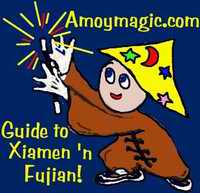
 Teng
Hiok Chiu
: FIRST CHINESE MODERNIST PAINTER: BIOGRAPHY OF TENG HIOK
CHIU (ZHOU TINGXU)
Teng
Hiok Chiu
: FIRST CHINESE MODERNIST PAINTER: BIOGRAPHY OF TENG HIOK
CHIU (ZHOU TINGXU)
(Amoy 1903 - Glastonbury1972)
by Prof. Kazimierz
Z. Poznanski 
Note: All
text and images below, and on Prof. Kaz' page,
are from Prof. Kaz's research, and his book, "Path of the Sun--The
World of Teng Hiok Chiu, The Kazimierz Z. Poznanski Collection."
Click Here to E-mail Dr.
Poznanski
Kazimierz Z. Poznanski, Professor
Jackson School of International Studies
PO Box 353 650
University of Washington
Seattle WA 98195
Click Thumbnails (framed
images) Below
for larger images
Click Here for "Feeling China: Art as
Jazz," by Prof. Kaz.
Click Here for "Happy Places: Landscaping
by Teng Hiok Chiu" (by Prof. Kaz)
Click Here for "Chinese
Beauty," (about Prof. Kaz' artistic journey, with images of his
unique interpretation of Chinese art)
Click Here for "Critical Comments" Click Here for "One Man Shows"
Click Here for "Teng & Georgia O'Keefe Click Here for "Off to Europe, 1926"
Click Here for "Teng Passes, 1972" Click Here for "Group Exhibitions"
Click Here for "Major Awards" Click Here for "Works Exhibited"
Click Here for Other Fascinating Fujian Sites
“I am trying to get the best out of both Eastern and Western art. I am using the techniques of European art, but I try to preserve the broadness of Eastern art with its preoccupation with essentials. But in the end all real art is the same. You may start from The East or from the West, with one or the other set of conventions, but if you really develop you belong neither to the East nor the West. Art is a universal language which speaks to every human heart” Teng H.Chiu
[Note: Xiamen is now one of the planet's leading producers of original and reproduction oils! Check out this website: Amoy Paintings International!]
Teng. H. Chiu was born on April 27, 1903 on the Gulangyu
Island outside of Xiamen (also Amoy) in Fukien
(Fujian), South China. He was born to a
once resourceful family of tea merchants. Xiamen was a very active trading
center in nineteenth century China but then lost this role. The island
traded mostly in tea which they were bringing from the neighboring mainland
region Fukien. As a boy, Teng’s father was converted to Christianity
by a Chinese pastor from the London Mission
Society. Later in his life he became a pastor on the Gulangyu
Island. With nine children, his family was by no means affluent, but
he built on the Island a good size villa with the income he earned. The
house, with a beach view and surrounded with exotic flowers and threes,
was located near the church that he serviced as a pastor. Teng’s
father became a person of some prominence, for a while serving as a leader
of the Christian Church Association and, at one point, was elected a president
of the Y.M.C.A.. He spent much of his energy raising funds to support
the church. Based on his fundraising, mainly from Chinese immigrants,
he established one of the first in China to start a school for girls,
which attracted children of affluent Chinese families. All the buildings
still exist, the recently remodeled into a multiple housing family villa,
the church that got converted into a retirement house, as well as the
school that serves as a multiple family housing.
Back to top
Teng’s father was politically active at the time of China’s
turmoil. He closely collaborated with Sun Yat-sen, the first President
of the Republic of China, and was already a close co-worker with Chiang
Kai-shek during his early days as a low-rank officer. The two families,
Chiu and Kai-shek, were closely related through marriage and friendship.
Teng’s first wife, Rhoda, was a niece of Mejling Soong, the wife
of the then General Chiang Kai-shek. They got married in China, in Shanghai,
where the family of Rhoda lived in, affluent enough to give her a good
education from Saint Jones University in Shanghai. Through this marriage,
Teng was also connected to the influential Soong family, with one of Mejling’s
sisters, with radical political ideas, marrying Sun Yat-sen.
Gulangyu Island, as well as Xiamen,
were very special places in China at the time Teng was born and it was
very much for this reason that the life of Teng went the way it did. Xiamen
was a treaty port with Western concessions and Gulangyu Island enjoyed
a status of an enclave where the late Qing dynasty allowed foreigners
to have land. Numerous consulates were set up as so Christian
churches and missions and schools run by the missionaries. Representing
different dominations the missions still worked together with the purpose
of spreading their word in other parts of China. Next to Westerners were
rich Chinese who would build opulent mansions with lush gardens or parks.
Unlike Xiamen, Gulangyu Island was
a place of affluence with very limited contact with Xiamen itself for
there were few reasons for the Islanders to cross the water.
It is this mixture of Western and Eastern culture that Teng was exposed
to that prepared him for his eventual departure to the West. The Island
also taught him that these two cultures can intermingle with a mutual
benefit, for each has something unique to offer. There was no complete
integration, but it was very common for Westerners to carry Chinese names
and speak Chinese, while many Chinese would use English names and speak
English. The life style was very leisurely, with most families having
somebody who played music and/or painted, so that Teng was exposed to
art, including Western art, very early. He definitely had to learn some
art at a local missionary schools since, given Victorian tradition, they
emphasized art education. The girl school run by his father had an art
teacher, one of the ladies from within Western segment of the population.
Given their major focus on sports, it is not surprising that Teng became
interested in tennis and basketball as well.
Back to top
Teng’s father had planned for Teng to get an academic education
and at the age of fourteen, in 1917, he sent him to the Anglo-Chinese
College of the London Missionary Society in Tiensin, Northern China. Similar
to many of the other children in Chiu’s family he was eventually
sent for further education to the West. This was one of the major payoff
of being the pastor for the London Mission Society, since Society would
typically send children of their pastors to England to train them as teachers
and send them back to China to stuff their schools or churches . Of the
four of his sisters, at least one attended a major Western University,
i.e., the London University. And one of his two brothers studied sociology
and economics at Cambridge University. Upon his graduation from Tiensin
college in 1920, Teng came to the United States to study history and archeology
at Harvard, where he spent at least a semester. He discovered later that
he was much more interested in painting, so the following year, in 1921,
he joined the School of Art at the Museum of Fine Arts in Boston (to be
tutored by Irwin Hoffman).
Off to Europe
In 1923 , upon his father’s instruction, Teng sailed to Europe for
both further studies and the opportunity to join his sister, who studied
then in London. But he changed his plans and decided to go to France first.
There, he enrolled at the Ecole de Baux Arts, but due to his father objections
-- and the threat of losing his allowance -- Teng moved to England. He
first enrolled at the University of London ,in 1924, where he took art
classes and attended various lectures. Later, in February 1925, he enrolled
at the Royal Academy of Arts where his studentship expired in February
1930. He passed all annual exams during 1925-1929.
He studied painting under Sir George Clausen and Sir Walter Russell, as
well as Mr. Charles Sims. While at the Royal Academy School, he broke
all previous records by being the only student to win all the prizes and
scholarships in every competition into which he entered. In 1926, he was
also the first foreigner elected as an associate member in the Royal Society
of British Artists.
Back to top
The long list of Teng’s recognition at the Royal British Academy
started in 1925, when he won the Royal Academy scholarship, funded by
the Royal family, which allowed him free access to instruction, models,
an art studio, and the costs of accommodation. He also was awarded a Landseer
Scholarship in 1926, which provided him with quarterly allowance to cover
his expenses. In 1926 he received Cresvick Prize (First Prize for the
“Two Painted Figures” and Second Prize for the “Set
of Four Figure Drawings”) and other recognitions followed, including
the Armitage Prize in 1928. In 1928, Teng also won the Royal Academy silver
medal, and, in 1929, he had the distinction of being the only foreign
artist ever to be awarded the Royal Academy Turner Prize (Gold Medal for
Landscape Painting).
From 1925 through 1930, Chiu traveled and painted in most of the counties
of the British Isles; virtually spending all his summers involved in outdoor
painting. One summer he painted in Cornwall, particularly around the small
fishermen village Polperro. The next he spent in East England, another
in the northern counties and one in the Lake District. Next Teng decided
to pack up and go for summer to Scotland in order to penetrate its coastal
areas. His exhibitions -- mostly of landscapes -- were met with such popularity
that many of his paintings were quickly sold. He first started exhibiting
at the New England Art Club, and he even sent his early paintings to the
French Salon and the Royal Academy (with the total of six acceptances
to its annual exhibitions). His first one-man show was at the Claridge
Gallery in 1929. Her Majesty Queen Mary honored the show with a official
visit, and, apparently, all the hanging paintings sold within a few days
after the royal visit. From 1926 on, Teng’s works were selling well
enough for him to be financially independent.
Back to top
During this period of success, his interest in Chinese art was renewed.
When he originally left China he had not been exposed to Chinese painting,
except for some classes in calligraphy. He worked for most of 1930 at
the British Museum in its China Division under Mr. Laurence Binyon, a
famous Orientalist (among other things the curator who organized the Charles
Freer Collection of Oriental Art in Washington D.C.). In the same year,
to reunite with hisnparents, that he helped financially using his prize
money and money from his sales, he returned to China. He continued to
paint, most likely around Gulangyu Island, and there is a number of oils
from this period that depict the Island and places in Xiamen. In 1931,
the following year, Teng Chiu managed to assemble a group of paintings
for an exhibition in Beijing. But he made almost no sales so that it became
clear to him that he cannot support a family of his own living in China.
In 1932, because of the Japanese invasion of Manchuria, and the threat
posed to Beijing, Teng left for Bali. He spent his Bali days with two
Prix de Rome art students, John Sitton, later with the Cornell University’s
Art Department, and Kenneth Johnston, later the chair of the Architecture
Department at the University of Pennsylvania. They settled in the Chinese
community that at the time already played there an important economic
role, including in trade and textiles. Paintings from this stay were presented
in Batavia, Java, where he spent the rest of 1932, and from the works
preserved it is clear that during this stage of his artistic life Chiu
was greatly influenced by French post-impressionist, Paul Gauguin in particular.
In contrast to post-impressionist who would depict places like Bali, or
in the case of Gauguin – Tahiti, as primitive and exotic, Teng would
concentrate on the harmony of humanity and nature.
Back to top
Teng returned to China in 1933, and in this year, in Shanghai, he had
another exhibition of his works. Growing political turmoil in China forced
him to move to Indochina and Siam, where he stayed for more than a year,
and he painted in Cambodia and Angkor as well. In 1935, he traveled back
to China, and it was at this point when Teng and Rhoda got married. This
year he gave an exhibition in Hong Kong and shortly thereafter they left
Hong Kong for Europe. This was their honeymoon trip, for which Rhoda,
a real party-goes and socialite, took forty four trunks of clothes. This
information comes from the Jacob’s family, out of Guilford near
London, with whom Teng stayed as the Academy student.
After making a number of stops, they made to Spain, where they visited,
among others, Granada, Toledo, Madrid, and Barcelona. Teng eventually
decided to settle in a small fishing village in Tossa de Mar, on the French
border. Fearing of political turmoil -- with civil war approaching –
Teng, and his wife, left Spain. They first stopped in Paris, and then
boarded a ship to London. From London, he left for a painting tour of
Scotland, which took him far north to the Cape Wrath. Many of his works
from this trip were then presented at a one-man show organized in London,
following the Great Chinese Exhibition of 1936.
Back to top
On the evening of the private viewing of his paintings in London, Teng
took a boat for Marocco, passing first through Portugal and then through
Tangier. It is not clear whether he was joined by his wife or not. In
Marocco, he spent one of his most intense periods, leaving scores of paintings.
He resided in Marrakesh, where he shared space with James McBey, a vey
popular etcher, and visited many other cities, including Rabat and Fez.
In 1937, he returned to England for a brief stay, and then left with his
wife for continental Europe. He visited Germany, including Berlin and
Dresden, and traveled to Austria, Hungary, Czechoslovakia, and Italy.
He returned to England in 1938, and then packed his bags for the United
States, where he stayed the rest of his life. He traveled intensely through
the United States, visiting, among others, Florida, North Carolina, Arizona,
and California.
He initially lived in New York on Park Avenue with his wife, and both
quickly became socialites frequenting the most prestigious parties and
gatherings in New York. In 1942, Chiu held his first American one-man
exhibition of paintings at the Knoedlers, one of the most important galleries
at the time, and, in fact, still in existence in New York. The show was
very well received /with one of the paintings from this show was subsequently
included/ at the 1947 Carnegy Institute Annual Exhibition of American
paintings. There was also a few-page article -- with four color reproductions
of paintings from the Knoedler Gallery show -- about Chiu’s work
that was published in the March 1943 issue of “Esquire” by
a well-know art critic Harry Salpeter.
Teng & Georgia O'Keefe
While in New York, Chiu befriended Georgia O’Keeffe,
who took a great liking of his work. After leaving for New Mexico (Abiquiu),
she still remained in close contact with Chiu. Chiu paid at least one
visit to her house in New Mexico, in 1944. He stayed about two weeks and
he painted there with his host. He also held a show of his work in Santa
Fe. Their correspondence and photographs from these visits have been preserved,
with the last letter -- inviting Chiu to Abiquiu -- dated 1955. The friendship
had a lot to do with the artistic affinity of the two artists. Importantly,
O’Keeffe was under strong influence of oriental, particularly Chinese,
art. Her teacher Arthur W. Dow was a student of Asian art, himself trained
by Ernest Fenollosa who spent much of his life in East Asia. While O’Keefffe
was drawn away from a more traditional style of Dow to an abstract painting
she retained strong attachment to the artistic philosophy of her teacher.
In her words “Of course my favorite is Chinese painting. I’d
still say it’s the best that’s been done” (see: S.R.Udall,
O’Keeffe and Texas, San Antonio, 1998). Among few paintings hanging
in her adobe house in Abiquiu most were from the Far East.
Back to top
Many of the qualities that Dow considered to essential in painting can
be found in Chiu’s works, and this is what attracted O’Keeffe
to the work of Chiu. Dow argued that painting should not be like sculpture,
three-dimensional, but rather that it should be two-dimensional, seeking
a harmony of beautiful spaces. Chiu’s painting definitely display
this quality with their remarkable flatness and their interplay of carefully
designed spaces, usually divided with horizontal demarcations. Similarly,
one can find in Chiu’s paintings such qualities cherished by Dow
as an effort to create pure pictorial synthesis, a clear reverence for
landscape (particularly marine scene -- ports, beaches, archipelagos --
which reminded him of his native Amoy island), retreat into unpeopled
spaces, as well as a powerful commune with nature, seen as peaceful and
serene (Ibid).
Chiu eventually left New York for Connecticut, where he established his
studio and began commercial work for local printing shops and textile
design studios. This move from New York was in great part related to Chiu’s
divorce, having a lot to do with the politics of the Chang Kai-Shek clan
in the United States. Chiu remained married at least through 1945 as indicated
in some correspondence directed to both of them. Chiu was active in the
artistic community and established close contacts with other Chinese painters
living in the United States. In 1956 he was invited to Yaddo, Saratoga
Springs, N.Y. and he also participated in a summer colony in Bennington
in late 1957-early 1958 as a guest of The Edward Macdowell Association,
Inc.. After leaving New York, his work was not shown as frequently as
before, though he continued to receive awards for his work.
Back to top
Teng Passes
Teng Chiu was paralyzed and confined to bed for a number of years before
his death and during this period he was relatively inactive as a painter.
In 1957, under bizarre circumstances he was severely bitten by two youngsters
in Hancock, N.H., with the incident being covered by the local press.
During the last years of his life he was taken care by a nurse, who eventually
became his second wife, Ann Baret. When brought to the New Britain Museum
of American Art for his 1971 exhibition, his mental state had deteriorated
to such a degree that he was not even aware of the event. Chiu died at
the age of 68 in Glastonburry, Connecticut in 1972. With the help of his
wife, the works of Chiu were shown in 1976 by a local gallery. She died
shortly thereafter and Chiu’s left no children.
There is very little left behind in terms of personal documents: photographs,
writings, etc.
Until very recently, the 1976 show was the last retrospective of Chiu’s
paintings and his name was forgotten for almost two decades. Only recently
some of Chiu’s works have appeared in major auction houses, both
in Great Britain and in Taiwan, i.e., through Taipei Sotheby’s auction
of modern Chinese oil paintings, drawings and watercolors. There were
no sales from 1996 onward until the auction of the Madame Chiang Kai-shek
estate in Long Island, New York in January 1999. During the sales a single
painting by Chiu titled “Lake Lure, North Carolina” was auctioned.
It is one of the two similar paintings included in the 1942 exhibition
at Knoedler’s, New York. Presumably, this painting was a gift from
Chiu to his aunt.
In 2003, the Frye Art Museum in Seattle put together the first in almost
thirty years show of Chiu’s paintings from a private collection
of Kazimierz Z. Poznanski, professor at the
University of Washington, Seattle. Fifty five oil paintings were included
in this show, which attracted about forty thousand visitors. A bilingual
catalog “The Path of the Sun. The World of Teng Chiu” was
published and number of reviews and articles in followed in.
This way Chiu’s art was reintroduced into United States, and eventually
it was brought to the attention of artists and art critics in China as
well. In January 2005, the official monthly magazine of the China Artists
Association “Art” published a lengthy feature about Chiu.
The next major exhibition, at Robert V. Fullerton Art Museum California
State University – San Bernardino, California is scheduled for 2007.
Back to top
Fascinated with its musical traditions, by discovering Teng Hiok Chiu,
Gulangyu Island has rediscovered also
its incredible contribution to the art life. Apparently, Teng was not
the only talented painter who would come from the Island, with most of
them, like himself, eventually leaving Gulangyu
for some foreign places. Editor of “Xiamen Evening News”,
Zhu Jialang, organized a seminar about Chiu and initiated the printing
of a series of articles about Chiu, while Vivian Wang wrote a piece for
“Xiamen News”. Bill Brown, professor at Xiamen
University devoted to Chiu a few pages of his 2005 guidebook on Gulangyu
Island. Local artists, including Xu Li and Tang
Shao Yun, would quickly recognize the genius of Chiu and the fact
that he probably was the best of his generation. They also started circulating
an idea of establishing a separate museum to house the works of Chiu and
other painters of his generation who lived on the Island.
Back to top
CRITICAL COMMENTS
“His sensitive eye is not satisfied with seeing, and his hand is
quick to suggest the subtle nuances in nature that give spiritual significance
to art”, “Morning Post”, London,
1930
“Refinement of eye, sensitiveness of hand-these
are Mr. Chiu’s special gifts in a high degree. What he has learned
of European methods, he has learned thoroughly; he has not, like many
Oriental painters before him, half learned his lessons and produce a straggling
hybrid. He uses oils with the fluency that his countrymen practice in
ink and water color. You might perhaps infer his personality from his
work, hardly his nationality” Lawrence Binyon,
1930 (introduction to the exhibition catalogue, Fine Arts Society, November,
1936)
“One cannot look at a roomful of Teng Chiu’s paintings without realizing how pervasive is his gift of presenting us with the smiling aspects of Nature. He hands us the world-sunny side up. His view of Northern Scotland for example, is hardly less tropical than that of Tangier or Java. Only occasionally, in his sense of design, does one feel the presence in his work of a man of the Orient. Otherwise his work belongs in the tradition of Western art. He is an Oriental also in the lightness and deftness of touch with which he has subdued, to quote Mr. Binyon, the Western style of painting. whose media most other artists of Oriental origin find so heavy and cumbersome. Chiu gives to the oil medium something of the graciousness of water color without losing the substantiality of oil. The views of the world which he gives us, although all bear the signature of one individual, are sufficiently various to add to the attraction which his work must have for those who are content to leave social significance to the sociologists” Harry Salpeter, Esquire”, 1942 (February)
“It is obvious that these places served only as points of departure
for the artist into the realm of personal expression in which forms are
simplified to the last degree and values differentiated with a sensitiveness
and subtlety that seem to leave the work hovering between reality and
the abstract” “New York Sun,”
1942
Back to top
“Teng Chiu has fluency of touch, rare purity of color and keenly
sensitive eye for the synthesis of landscape” Mellvile
Upton, “New York Sun”, 1942
“Teng Chiu ... is endowed with a clarity of vision that washed any
nonessential detail. It produces a pristine, cleansed world which the
artist records with the aestetic discipline of his race” Frank
Caspers, “Art Digest”, 1942
“The best of the work is crisply and briskly and decoratively delightful.
Teng Chiu likes clear, fresh, high-keyed color, and he likes to lay it
on, thick and juicy, in a pattern of patches that tends -- sometimes more,
sometimes less -- toward the abstract side”.
Edward Alden Jewell, “New York Times, 1942
“...shows the color patches so frequently used by Matisse and Marquet
-- a phase of painting that falls between realism and functional abstraction
plus a distinct imaginative approach to the subject matter”. Alfred
Morang,”El Palacio”, Santa Fe, 1994 (August)
”His paintings remind us how beautiful nature can be when it is
viewed by a quiet eye and a poetic imagination and by an artist whose
technique is strong and yet does not intrude upon the sensitivity of the
execution”. Florence Berkman, Hartford Time,
1971
Back to top
ONE-MAN SHOWS
London, Claridge Gallery, 1929 (Queen Mary attended)
Paris, 1929
London, Joseph Duveen Exhibition, 1929
London (under auspices of China Society), 1930
Liverpool, Walker Gallery, 1930
Peking, Institute of Fine Arts, 1931
Shanghai, 1933
Batavia, Bandoeng, and Samarang, Java, 1933
Saigon, Continental Gallery, 1934
Hong Kong, 1935
London, Fine Art Society, 1936
New York, Knoedler Gallery, 1942
Dayton, Art Institute
Indianapolis, John Herron Art Institute
New London, Conn., Layman Allyn Museum
New Britain, New Britain Museum of American Art,1971
Back to top
GROUP EXHIBITIONS
Royal Academy Exhibiton, London (summer shows) entries:
1927 “A Summer Day in Essex” ... 1928
“Near Deadham, Essex”
1930 “Wensleydale, Yorkshire” ... .1931
“Waterside, Polperro”
1937 “Moulay Irdis, Marocco” ... ..1938
“After Rain, Ullapool, Scotland”
Salon d’Automne, Paris
Salon de Independents, Paris
Museum of Fine Arts, “Art in Transition”, Boston (March 23-May
30), 1977
Metropolitan Museum of Art, New York
National Academy of Design, New York
Alliance of Artists of America, New York, 1946
Carnegie Institute, “Painting in the United States”, Pittsburgh,
1947
Yale Museum Gallery, New Haven, Conn.
City Art Museum, Cincinnati
City Art Museum, St. Louis
Museum of New Mexico, Santa Fe, 1944
Back to top
MAJOR AWARDS
Olympic Bronze Medal, Paris, 1924 (basketball)
Landseer Award for Best Work, London, 1925
Royal Academy Silver Medal, London, 1926
Creswick Prize (Landscape), London, 1926
Royal Academy Silver Medal, London, 1926
Royal Academy Silver Medal for Figure Painting, London, 1928
Salon Medal for Oil Painting, Paris, 1928
Second Armitage Prize (Composition), London, 1928
Turner Prize (Royal Academy Gold Medal for Landscape Painting), 1929
Oil Painting Prize, Alliied Artists of America, N.Y., 1944
Royal Society of British Artists
1931 Bradford Grassington, Yorks Silver Moor, Whorfdale
1931 (winter) Grassington, Yorks Kilnsey
...Village Street in Cornwall
Back to top
1932 Silver Moor Wharfedale, Yorks North Wales
1932 (winter) Blue Summer,.. Polperro Harbor,...In North Wales,. Landscape
1933 Polperro Harbor, Polperro Harbor, The Narrow Street
1933 (winter) Yorkshire, Waterside Polperro, Farm in Wiltshire
1934 Street in Cornwall, Yorkshire, ..Bardon Moor, Yorks
1936 Near Norfolk Coast, Landscape, Silver Morning
1936 Bridge of Longevity, Peiping (Beijing),
Great Wall, Near Peiping (Beijing),
Frontier of Spain
Back to top
Knoedler, New York, 1942
(November 2 - 21)
1. Approach to Drum 2.
Great Wall, Near Peiping 3. The Lake District, England
4. Ullapool, Scotland 5. Loch Broom
and Summer Isles 6. By the Blue Mediterrenian
7. Street in Tossar, Spain 8. Landscape
Near Balcelona 9. Dancer, Bali
10. Market-Place in Java 11. Tangier
12. Street in Tangier 13. Azrou, Marocco
14. Outskirt of Marrakesh 15.The Holly
City, Marocco 16. Lower Manhattan
17. Central Park, Late Summer 20. Central
Park, Winter 21. East River, New York
22. Snow in North Conway 23. Whitefield
Village 24. Storm Near Mount Washington
25. San Francisco Bay 26. Grand Canyon
27. Road to Taos 28. Lake Lure, North
Carolina
29. Lake Lure, North Carolina 30. Palm
Beach North 31. Palm Beach South
32. Miami Beach I, 33. Miami Beach II
New Britain Museum of American Art, 1971
(February 13 - Marcg 14)
1. China, 1931, 20 x 26
2. Balinese Dancer, 1932, 29 x 21 1/2
3. Market Place in Java, 1932, 16 x 12
4. Summer Isles, 1936, 20 x 24
5. Ullapool, Scotland, 1936, 17 1/2 x 21 1/2
6. Summer Isles, Scotland, 1936, 20 x 30
7. Loch Broom, Scotland, 1936, 30 x 38
8. Loch Broom and Summer Isles, 1936, 24 x 30
9. North Wales, c. 1936, 16 x 20
10. Red Tree by the Mediterrenian, 1937, 28 x 36
11. Street in Tangier, Marocco, 1937, 24 x 30
12. Tangier, Marocco, 1937, 16 x 20
13. Street in Tossar, Spain, 1937, 24 x 36
14. Tangier, 1936, 8 x 9 1/2
15. Two Boats, c. 1936, 20 x 25 1/2
16. Boats on Shore, 1936, 14 x 18
17. Landscape near Barcelona, 1937, 16 x 22 1/2
18. Spanish Lanscape, c. 1937, 12 1/2 x 15 1/2
19. Venice, Italy, c. 1937, 24 x 30
20. Winter, Central Park, New York, 1939, 20 x 24
21. Lower Manhattan, c. 1940, 25 x 30
22. Winter in the Park, c. 1940, 30 x 25
23. Maine Coast, c. 1940, 25 x 30
24. Miami Beach, Florida, 1941, 18 x 32
25. Storm Near Mount Washington, 1941, 25 1/2 x 30
26. Taos, New Mexico, c. 1939, 24 x 30
27. Snow in North Conway, N.H., c. 1945, 25 x 30
28. Landscape, New Mexico, c. 1939 ,16 x 20
29. Farm, Pownal Valley, Vt., c. 1948, 16 x 20
30. Pownal Center, c. 1949, 16 1/2 x 20 1/2
31. Church at Pownal Center, c. 1948, 16 x 20
32. Pownal Valley, c. 1948, 21 x 25
33. Old Route 7, Pownal Center, c. 1948, 15 x 18
34. Road to Bennington, 1949, 14 x 16
35. Buildings, Pownal Center I, c. 1945, 20 x 25
36. Buildings, Pownal Center II, c. 1945, 12 x 16
37. Pownal Center, 1945, 14 x 18
38. Blue Tree, c. 1937, 20 x 24
39. Horses, c. 1940, 36 x 28
41. Picnic, c. 1937 10 1/2 x 7 1/2
“A good traveler is one who does not know where
he is going to, and a perfect traveler does not know where he came from.”
Lin Yutang
Back to top
TRAVEL
LINKS  Favorite
Fujian Sites
Favorite
Fujian Sites  Fujian
Foto Album
Fujian
Foto Album  Xiamen
Xiamen
 Gulangyu
Gulangyu
 Fujian
Guides
Fujian
Guides  Quanzhou
Quanzhou
 Zhangzhou
Zhangzhou
 Longyan
Longyan
 Wuyi
Mtn
Wuyi
Mtn  Ningde
Ningde
 Putian
Putian
 Sanming
Sanming
 Zhouning
Zhouning
 Taimu
Mtn.
Taimu
Mtn.  Roundhouses
Roundhouses
 Bridges
Bridges
 Jiangxi
Jiangxi
 Guilin
Guilin
 Order
Books
Order
Books
 Readers'
Letters
Readers'
Letters
Last Updated: May 2007
![]()
DAILY
LINKS
![]() FAQs
Questions?
FAQs
Questions?
![]() Real
Estate
Real
Estate
![]() Shopping
Shopping
![]() Maps
Maps
![]() Bookstores
Bookstores
![]() Trains
Trains
![]() Busses
Busses
![]() Car
Rental
Car
Rental
![]() Hotels
Hotels
![]() News
(CT)
News
(CT)
![]() Medical
& Dental
Medical
& Dental
![]() YMCA
Volunteer!
YMCA
Volunteer! ![]()
![]() XICF
Fellowship
XICF
Fellowship
![]() Churches
Churches
![]()
![]()
![]() Temples
Temples![]()
![]() Mosque
Mosque
![]() Expat
Groups
Expat
Groups
![]() Maids
Maids
![]() Phone
#s
Phone
#s
EDUCATION
![]() Xiamen
University
Xiamen
University
![]() XIS(Int'l
School)
XIS(Int'l
School)
![]() Study
Mandarin
Study
Mandarin
![]() CSP(China
Studies)
CSP(China
Studies)
![]() Library
Library
![]() Museums
Museums
![]() History
History
DINING ![]() Tea
Houses
Tea
Houses
![]() Restaurants
Restaurants
![]() Asian
Asian
![]() Veggie
Veggie
![]() Junk
Food
Junk
Food
![]() Chinese
Chinese
![]() Italian
Italian
![]() International
International![]()
![]() Visas
4 aliens
Visas
4 aliens
RECREATION
![]() Massage!
Massage!
![]() Beaches
Beaches
![]() Fly
Kites
Fly
Kites
![]() Sports
Sports
![]() Boardwalk
Boardwalk
![]() Parks
Parks
![]() Pets
Pets
![]() Birdwatching
Birdwatching
![]() Kung
Fu
Kung
Fu ![]() Hiking
Hiking
![]() Music
Events
Music
Events
![]() Cinema
Cinema
![]() Festival&Culture
Festival&Culture
![]() Humor&
Humor&![]() Fun
Fotos
Fun
Fotos![]()
BUSINESS
![]() Doing
Business
Doing
Business
![]() Jobs!(teach/work)
Jobs!(teach/work)
![]() Hire
Workers
Hire
Workers
![]() Foreign
Companies
Foreign
Companies
![]() CIFIT
(Trade Fair)
CIFIT
(Trade Fair)
![]() MTS(Translation)
MTS(Translation)
![]()
Back to Top
